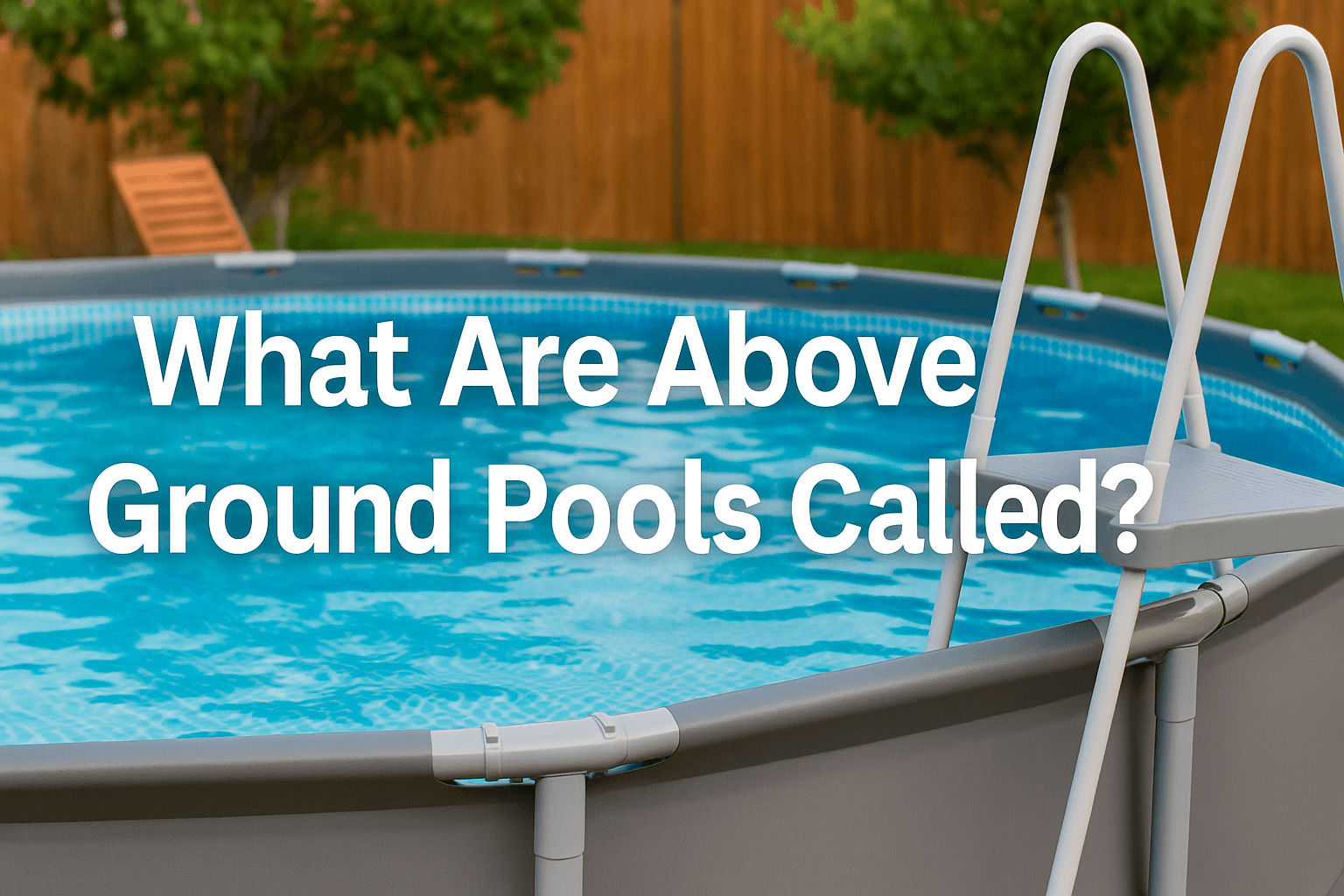
What Are Above Ground Pools Called?
What do you call that big splashy thing in the garden — a pop-up, a steel-frame, or something else?
The short answer: they’re known as inflatable, portable, or permanent above ground pools.
But not all pools are created equal.
And calling it the wrong name could have you Googling for the totally wrong thing.
Let’s clear it all up — quickly, simply, and with a bit of fun along the way.
Beyond the Basics: What Above Ground Pools are Called
The Common Name and Its Variations
Ask five families what they call their pool and you’ll likely get five different answers.
Some say “pop-up”, others swear by “steel-frame”, and a few just call it “the paddling pool’s bigger cousin”.
Whatever the name, we’re all talking about one thing:
A pool that sits on top of the ground — no digging, no builders, just water, sunshine, and splashes.
The Formal Terminology
If you're browsing a website or speaking to a supplier, here’s what you’ll likely hear:
-
Above ground pool – the standard umbrella term
-
Metal-framed pool – a clue that it has structure
-
Rigid-wall pool – tougher and more durable
-
Steel-frame pool – often used for more permanent options
These names help you sort the quick-and-easy options from the long-haul backyard investments.
Slang and Colloquialisms ("Cowboy Pool")
Of course, not everyone sticks to formalities.
Especially not parents who’ve spent the afternoon inflating something the size of a small car.
In some corners of the UK — or on Instagram — you might hear:
-
“Cowboy pool” – a cheeky nickname borrowed from American DIY circles
-
“Garden splash pool” – says exactly what it is
-
“Pop-up pool” – a nod to how fast it’s up and ready
-
Or the ever-honest: “That pool thing we drag out in summer”
Whatever you call it, just make sure it holds water.

Classifying Pools by Type and Material
Let’s break them down properly — because not every pool is built the same.
Inflatable Pools (Easy Set)
These are the summer classics.
Out of the box, inflated in 10 minutes, filled with water shortly after.
Great for families who just want to splash without the fuss.
They're also ideal for smaller gardens or if you’ve only got the kids for part of the summer.
And when the clouds roll in? Deflate, dry off, and stash away.
Soft-Sided Metal Frame Pools
These strike a balance.
You get the sturdiness of a steel frame with the flexibility of a soft, durable liner.
They’re great for those who want something that lasts longer than a lilo but doesn’t need a full weekend to install.
Expect them to stand strong through a decent British summer — and maybe even the next.
Hard-Sided or Permanent Pools
Now we’re talking commitment.
Permanent above ground pools are built to last.
They come with rigid walls, steel or resin frames, and often a more refined look.
Think of it as your own private swim spot that doesn’t need a cement truck.
Ideal if your family lives in the garden from May to September.
Semi-Inground Pools
The best of both worlds.
These sit part-in, part-out of the ground — a smart solution for sloping gardens or those after a more “built-in” vibe.
You’ll see them paired with decking, landscaping, and a bit of pride.
They’re not for everyone, but for some? Total game-changer.

Understanding Related Pool Terminology
Why Pool Construction Matters
Let’s be honest — it’s not just about the splashing.
What your pool’s made of can make or break its lifespan.
A £100 inflatable that bursts in week one? Not ideal.
But a rust-resistant frame that lasts five summers? Worth every penny.
Steel, Resin, and Aluminium Frames
Here’s a quick breakdown:
-
Steel: Strong and steady but needs protection from rust
-
Resin: Lightweight and rust-proof — great for British drizzle
-
Aluminium: Light, durable, and pricier — but you get what you pay for
If you live somewhere coastal or wet (which is basically most of the UK), resin and aluminium will save you stress.
The Role of the Vinyl Liner
This is what keeps the water in — and it does more than you think.
A good liner is:
-
UV resistant (because yes, we do get sun sometimes)
-
Thick enough not to tear with a stray toy or toenail
-
Easy to replace if needed (handy if your dog jumps in)
Don’t overlook it. It’s doing all the hard work behind the scenes.

Key Parts of an Above Ground Pool
Skimmers and Filters
Ever scooped out soggy leaves while the kids splash around? That’s where skimmers come in.
They pull in surface debris so your pool doesn’t turn into a swamp.
Filters keep everything else in check — hair, dirt, and whatever mystery goo ends up in there.
A good system saves you time, tantrums, and chemical overload.
The Top Rail and Uprights
These hold your pool together — literally.
The top rail is the bit everyone leans on (don’t lie, you do it too).
The uprights keep the structure standing tall, even after a big cannonball.
If you're buying a bigger pool, strong rails and uprights are non-negotiable.
Other Pool Types for Comparison
Inground vs. Above Ground
Inground pools? Lovely, permanent, and… wildly expensive.
They require digging, planning permission, and usually a builder or two.
Above ground? Set it up yourself, skip the permits, and keep your garden intact.
It’s a win-win for most families.
Swim Spas and Stock Tank Pools
Swim spas are part pool, part hot tub, part fitness zone.
You swim against a current — like a treadmill but wetter.
Stock tank pools are the rustic cool kids on the block.
Made from livestock tanks, they’re quirky, durable, and all over Pinterest.
Perfect if you fancy a dip and a chat starter.
Have you checked out our other posts?
Different Types Of Above Ground Pools
Everything You Need To Know About Above Ground Pools
Above Ground Pools That Can Be Buried



Leave a comment